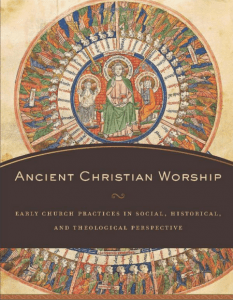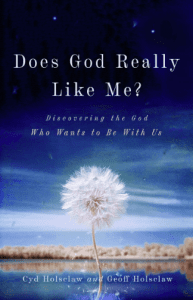 In working on my Colossians commentary I was struck by what Paul said of music. Here are his words in Colossians 3:16:
In working on my Colossians commentary I was struck by what Paul said of music. Here are his words in Colossians 3:16:
Let the message of Christ dwell among you richly as you teach and admonish one another with all wisdom through psalms, hymns, and songs from the Spirit, singing to God with gratitude in your hearts.
What struck me was that teaching and admonishing in all wisdom through the recitation/singing of psalms, through hymns, and through songs from the Spirit. That is, singing is catechesis; singing is a form of teaching. Church music is not ornamental, it is not entertainment, and it is not aesthetics. It is didactic to the core. Music mattered to early Christians — surely both privately and corporately.
Hence, Andrew McGowan’s Ancient Christian Worship has an entire chp on Music (chp. 4), one of the six practices of Christian worship (meals, Word, music, initiation, prayer, and time).
But, but, but… for many today music is worship and we speak of “worship time” as the time when we sing. Not so with Paul. Music is an element of worship and music is worship in that sense, but worship is bigger and music is more than singing — and finding our way into an experience with God.
Music entails dance for the body’s involvement is not just with the act of singing but also the body’s participation in that music. Music expressed gospel and theology so the early church cared what words were sung; over time music became more specialized and singers and performance occurred — with concerns about too much performance — and choirs developed and dancing was at times involved.
1.0 The Beginnings of Christian Hymnody
There are poetical lines in the NT, some of which were songs from the start and others that became songs. Thus, he points us at Luke 1:46-55 and 1:68-79 as well as Phil 2:6-11 and John 1:1-16. Paul mentions music and singing and orients them toward edification in 1 Corinthians 14:7-15 and Ephesians 5:19. See, too, Acts 16:25; James 5:13; Revelation 5:8.
2.0 2d and 3d Century Christianity
Christians sang at dinner meals — at evening banquets — and some of it evidently individual (116; referring to Tertullian, Apol 39.18; On the Soul 9.4). Perhaps, he suggests, it was chant and sometimes it was the Hallel Psalms.
Communal singing was a metaphor for unity and fellowship, but it indicates the church fellowship singing as a choir together. Performative singing was yet to come. From the 2d Century we have evidence of specialized singers in groups: Odes of Solomon 7:22-23. By the 4th Century there are specialized singers in the church.
Clement of Alexandria wrote about music; he favored the Dorian mode based on a diatonic scale. He was against too much decoration. Instruments were permitted. He liked Davidic Psalm singing. He wrote songs.
McGowan sketches the anxiety about using instruments, perhaps because of their pagan associations or because of their association with the (now well behind them) Jewish temple. He says this anxiety moved along a scale from indifference to suspicion. McGowan seems to suggest the absence of instruments until the 4th Century, and then often they were criticized.
He then sketches the 4th Century, where we see further perfections of what was going on: Psalms, hymns, daily prayers, etc., in the Eastern churches separate choirs for males and females.
Dancing is discussed as well. Clement of Alexandria shows they danced early in the church to their own music (Stromata 7.7.40).











